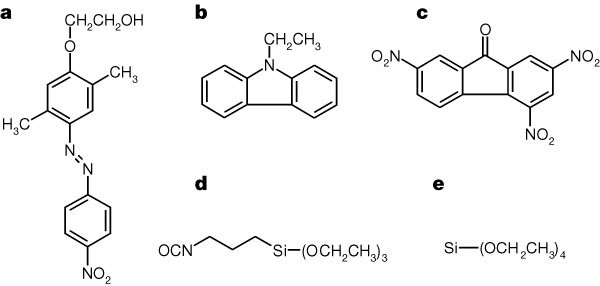
A photorefractive organically modified silica glass with high optical gain
- Select a language for the TTS:
- UK English Female
- UK English Male
- US English Female
- US English Male
- Australian Female
- Australian Male
- Language selected: (auto detect) - EN
Play all audios:
Photorefractive materials1 exhibit a spatial modulation of the refractive index due to redistribution of photogenerated charges in an optically nonlinear medium. As such, they have the
ability to manipulate light and are potentially important for optical applications1 including image processing, optical storage, programmable optical interconnects and simulation of neural
networks. Photorefractive materials are generally crystals, polymers and glasses with electro-optic or birefringent properties and non-centrosymmetric structure2. Here we report the
photorefractive effect in both non-centrosymmetric and centrosymmetric azo-dye-doped silica glasses, in which refractive index gratings that are spatially phase-shifted with respect to the
incident light intensity pattern are observed. The effect results from a non-local response of the material to optical illumination, and enables the transfer of energy between two
interfering light beams (asymmetric two-beam coupling). Although the writing time for the present grating is relatively slow, we have achieved a two-beam coupling optical gain of 188 cm-1 in
the centrosymmetric glasses, and a gain of 444 cm-1 in the non-centrosymmetric structures. The latter are fabricated using a corona discharge process3 to induce a permanent arrangement of
azo-dye chromophores.
We thank N. Kukhtarev, S. Janz, J. Roovers and I. Lévesque for stimulating discussions.
Institute for National Measurement Standards, National Research Council, Ottawa , K1A 0R6, Canada
Department of Materials Science and Engineering, University of California, Los Angeles, 90095, California, USA
Instituto de Ciencia de Materiales de Madrid, Consejo Superior de Investigaciones Científicas, Cantoblanco , Madrid, 28049, Spain
Institute for Chemical Process and Environmental Technology, National Research Council, Ottawa, K1A 0R6, Canada
Anyone you share the following link with will be able to read this content: